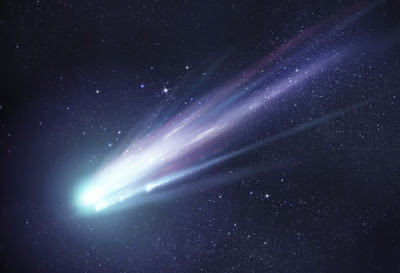It's not an April Fool's joke. On April 1, a comet, 41P / Tuttle-Giacombini-Krezak, will make its closest approach to Earth.
It will approach our planet, more than ever for at least a century and a half, at a distance of about 21,8 million kilometers.
It will be visible with small telescopes, while it is possible that one can see it even with the naked eye in the dark sky.
Rarely does a comet come so close to Earth.
The comet was first discovered in 1858 by the American astronomer Horatio Tutl of the Harvard Observatory and was re-observed by the French astronomer Michel Giacombini of the Nice Observatory in 1907 and the Slovak Lubor Krezak 1951.
It belongs to the so-called "group of comets of Jupiter", which have been trapped by the gravity of the largest planet in our solar system, following an orbit between it and the Sun every five and a half years. He will return to Earth's neighborhood in 2066.
The "upside down" asteroid
Astronomers have also observed a very unusual asteroid orbiting the Sun about the same orbit as Jupiter, but in the opposite direction to its orbit, with the risk of colliding with the giant planet, like a small car. with a huge truck coming from the opposite.
The asteroid - with the temporary name 2015 BZ509 - was discovered with the Pan-STARRS1 telescope in Hawaii and moves in the opposite direction with every planet in our solar system, but also with almost every known asteroid (at least 99,99%). It is the only known asteroid in our solar system that moves upside down around the Sun, while at the same time being on the same orbital plane as a planet.
Researchers led by Canadian Paul Wiggert of the University of Western Ontario, who studied the comet and published it in the journal Nature, said that for at least a million years, the comet has been playing a peculiar "cosmic game of cowardice". »With Zeus. In contrast, all other known "upside down" asteroids (no more than 100 in our solar system) live far away from planets.
About 6.000 asteroids orbit Jupiter and are known as "Trojan asteroids".
But they follow the same direction as the giant planet, so they do not risk falling on it.
On the contrary, BZ509, which is about three kilometers in diameter and never approaches the Earth, is constantly challenging its fate, moving in a "wrong" way towards Jupiter. According to astronomers, it has saved it tens of thousands of times (orbits) in this "game", but for how much longer?
Source: RES - EIA

